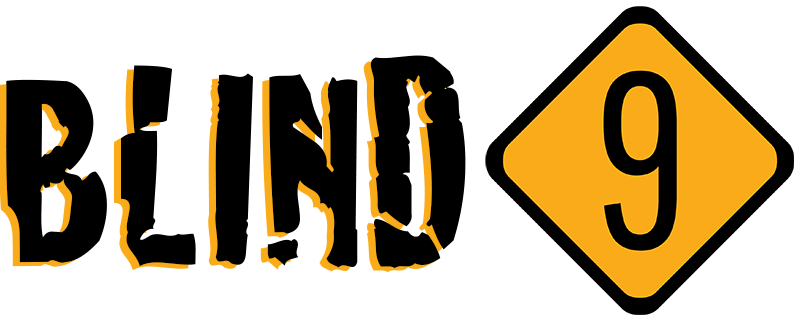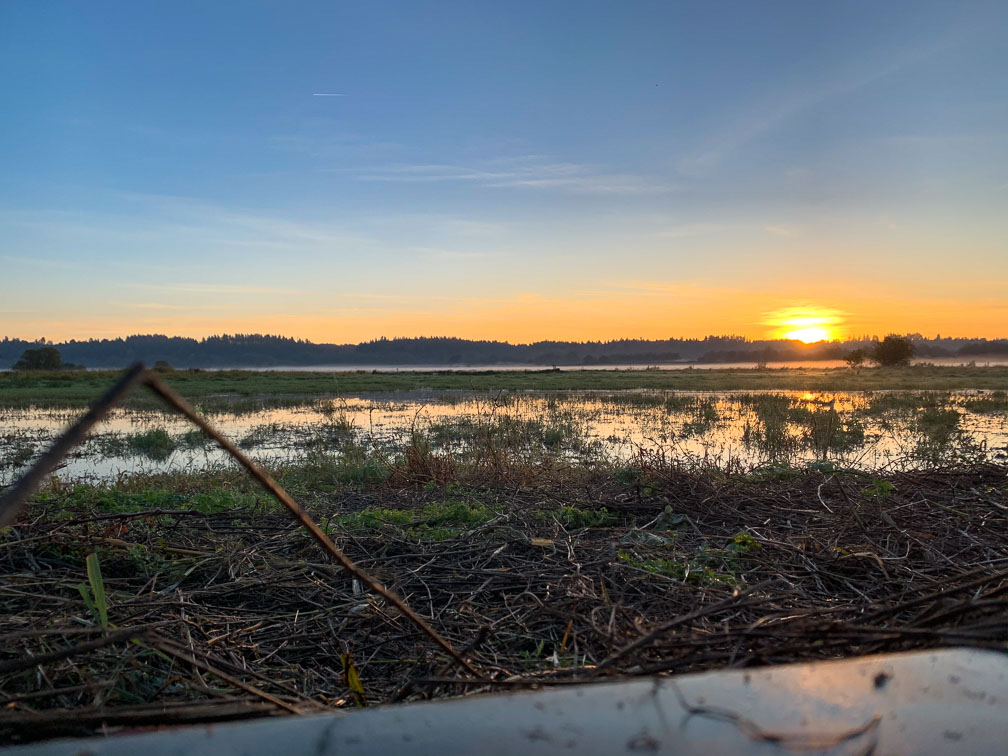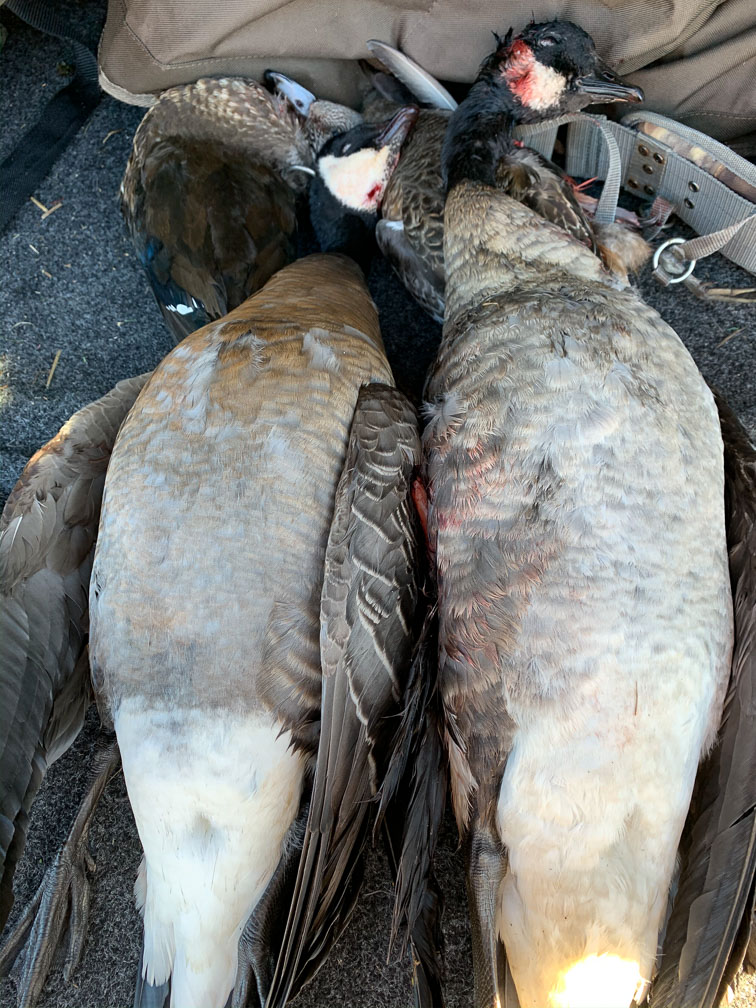Most waterfowlers will tell you a sunny day is a bad day for duck hunting. I’m not going to argue:
- Ducks tend to sit tight in the sunlight.
- When they do fly, they are harder for me to pick up against a blue sky versus a cloudy one.
- Miscues in your camouflage will become glaringly obvious in the bright sun.
- Finally, it’s particularly hard to track an incoming duck when it flies directly across the sun. A temporarily blinded hunter has a hard time hitting anything.
This type of blue-sky day was exactly what we faced Oct. 24, 2019 when we hunted at Ridgefield National Wildlife Refuge.
Why We Picked Blind 18
I had a late lottery pick and given that goose season was about to close for a few weeks we wanted to get a blind that would get an opportunity at geese, but would not sacrifice too much duck action either. So when our turn came there was only one blind that met both the duck and goose requirements – Blind 18. It would not be my first choice on a sunny day because most of the water around it is east and the blind is positioned for you to either face east or west. So we would be staring basically right into the rising sun.
The tradeoff is this blind sits in a trio of blinds (17, 18, and 19) on the south end of the refuge that can get unopposed shots on geese traversing this area to get to and from the river.
The Decoy Set-up
We got into a bit of a rush to get the decoys out after we underestimated the time it would take to trek the 100 yards of watery path that leads to the blind. So on this sunny, calm day we decided to do a simple V decoy set, with the tip of the V as the blind. The opening of the V faced east. Luckily the sun comes up in the southeast so it wasn’t all bad.
The blind also comes with a trio of goose floaters donated by the Lower Columbia Chapter of the Washington Waterfowl Association, which we added to the two goose floaters in my decoy bag, which also included a mixture of mallards, wigeon, teal, gadwall, and a couple of pintail (although it’s a too early for them).
Not Many Ducks, Tons of Geese
It was predictably a slow day for ducks. The migration does not typically ramp up in our area until the middle of November, when lower temperatures and storms drive ducks south from Canada. We did get a sunrise bag of three wood ducks that first circled us and then gave us easy landing shots in the wigeon decoys. Shortly afterwards we were able to take a hen wigeon that did the same thing.
The story of the day, however, were the numbers of geese in the area. We got to witness hundreds of cacklers, taverners, and duskies criss-crossing the refuge.
We got our first chance on a lone taverner that we called into the goose decoys. Our second chance came on a a pair of cacklers that flew low directly over us. We dropped the pair, but one dumped into the reedy water about 40 yards away. I marked its location easily as it splashed a couple of times. I had assumed it was either dead or playing dead because it did not move again. When I got there, it was nowhere to be found. It had vanished. I’m assuming it escaped submerged as I never did see it swimming away. We looked for it a couple times throughout the morning, assuming that maybe it dove underwater and died.
We took a couple of other shots at geese directly overhead but missed. They were not the best choices, but also not the worst.
Comparing a Taverner and a Cackler
We did get a chance to compare a cackler and a taverner goose. If you look at the photo, you can see that the cackler (left) is a slightly smaller bird with a darker breast with patches of brown. It’s bill also is very short. The taverner, meanwhile, has a slightly longer neck with a more silver breast and a larger, more curved bill. The taverner’s bill measured 38mm, which is 2mm shy of the length that wildlife officials will typically start trying to identify if the bird is a dusky.


